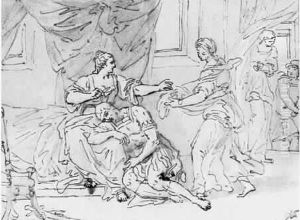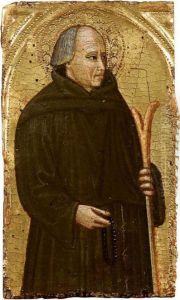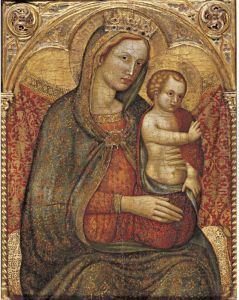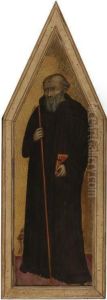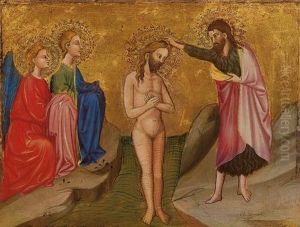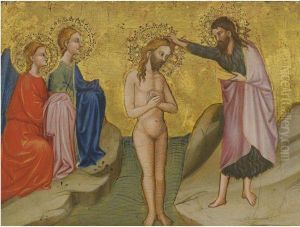Cecco Di Pietro Da Pisa Paintings
Cecco di Pietro da Pisa was an Italian painter of the Gothic period, active mainly in his native city of Pisa and the surrounding regions in the late 14th century. His exact birth and death dates are not precisely known, but he is generally believed to have been born around 1330 and to have died around 1402. Cecco di Pietro is considered one of the significant contributors to the development of Pisan painting in the late Middle Ages, marking a transition from the Byzantine style towards more naturalistic and expressive forms, characteristic of the early Renaissance.
Cecco's work is noted for its detailed narrative scenes, vivid use of color, and incorporation of architectural elements that demonstrate a keen observation of the physical world, albeit within the stylistic conventions of his time. He was deeply influenced by the Sienese school, especially by the works of Simone Martini and the Lorenzetti brothers, from whom he adopted a refined elegance and a sensitivity to line and color. However, Cecco di Pietro managed to infuse his works with a distinctive personal touch, often evident in the emotional expressions of his figures and the intricate decorations of his compositions.
Throughout his career, Cecco was involved in various significant projects, including the decoration of churches and public buildings in Pisa and its vicinity. Among his known works, the altarpieces and frescoes in the Church of San Francesco and the Church of Santo Stefano dei Cavalieri in Pisa stand out for their artistic quality and historical importance. These works not only highlight his mastery of the medium but also provide valuable insights into the religious and social context of 14th-century Pisa.
Despite his contributions to Italian art, Cecco di Pietro's fame has been somewhat overshadowed by that of his contemporaries and successors in the Tuscan Renaissance. Nevertheless, recent scholarship has begun to reassess his role and significance, recognizing him as a pivotal figure in the transition from medieval to Renaissance art in Italy. His legacy is preserved in the collections of various European museums, where his paintings continue to be studied and appreciated for their beauty and historical value.
